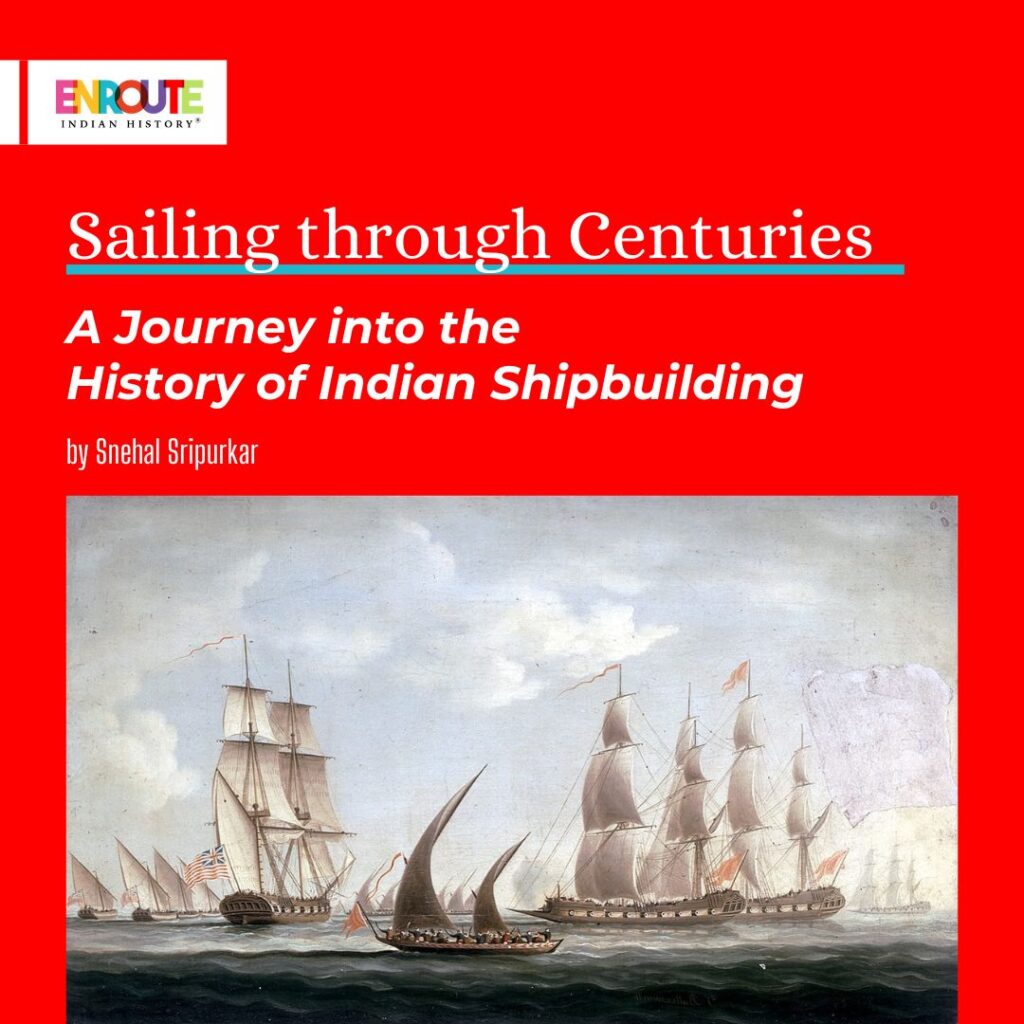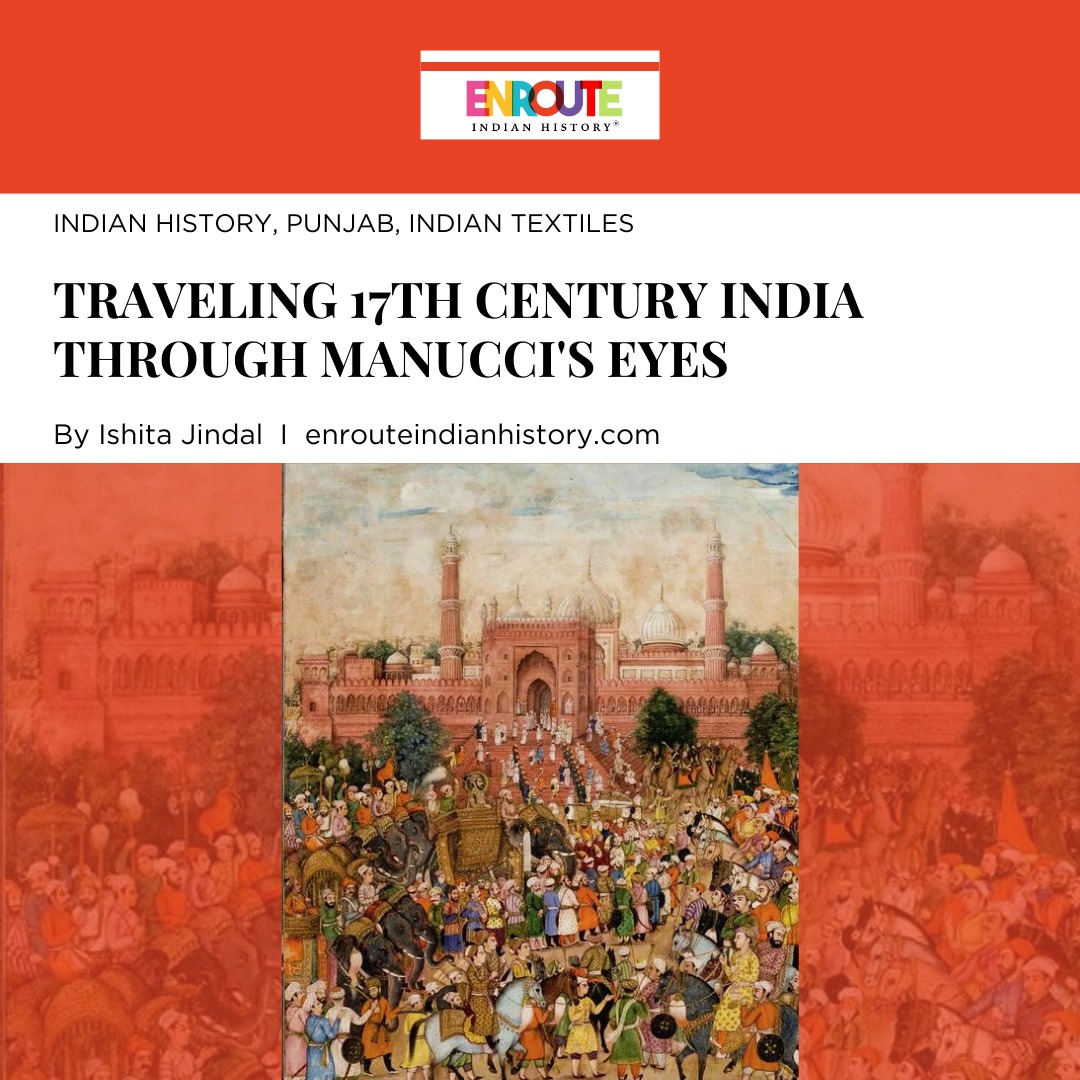Sailing Through Centuries: A Journey into the History of Indian Shipbuilding
- enrouteI
- July 6, 2023

Visitors from outside the subcontinent during the ancient and medieval periods seem to have displayed a great fascination with India’s shipbuilding industry. In 326 BCE, Alexander the Great commissioned the construction of 1800 ships in India to carry his armies back to Macedonia. In the early fifteenth century, Chinese Admiral Zeng He sent his chronicler and interpreter, Ma Huan to document shipbuilding in Bengal’s yards. Zeng He had realized that his fleet ships were dwarfed by those of the subcontinent. The Italian monk Friar Odoric in his writings dating back to the fourteenth century wrote that Indian ships were so huge that they could carry 700 people. Italian explorer and merchant, Nicole Dei Conti remarked in 1420 CE that Indian ships were bigger than Italian ships, and built with such finesse that they could finish voyages even if partly destroyed. India, with its coastline of 10,000 km has long since been home to a formidable ship-building industry, evident through these travellers’ fascination with it. Proceeding chronologically, this article attempts to uncover what we know of the subcontinent’s ships from the ancient and medieval eras, the communities involved in constructing them, and the knowledge utilized and guarded by them about shipbuilding practices.
Ancient India had a thriving maritime trade network, allowing it to engage in trade, exploration and cultural exchange. The Indus Valley site of Lothal was excavated by the Archaeological Survey of India from 1955 to 1961. Among the findings unearthed in 1961 was a wrecked ship, made of Kerala teak. Kerala teak, also called Malabar teak or Indian teak, is a teak sourced from the southern state of Kerala known for its durability, strength, and resistance to decay and insects. As iron had not been used yet in the subcontinent, Kerala teak, stitched together with coir yarn and dipped in fish oil was the preferred material for shipbuilding. This ship did not have a rudder (the moveable flat surface at the ship’s rear end used for steering), and was steered using large oars. Crucially, the ship could change direction even when not necessarily moving forward. It is not yet certain how holes were drilled in a block of wood as hard as teak and with utmost precision. Ships from Lothal travelled to distant parts of Asia and Africa.
The use of iron in the subcontinent is commonly evidenced through its use in agriculture-related machinery. However, the ship found in ancient Dwarka also shows triangular and rectangular-shaped iron sea anchors, speaking to iron use in the subcontinent from about 1800 BCE. This speaks to the importance of ships and marine archaeology as a source for historians to uncover broader knowledge practices held by people of ancient India, in this case of the use of Iron.
Kautilya’s Arthashastra, and Megasthenes’ Indica, both works dated to the Mauryan era (about 321 BC), make mention of the title Navadhyaksha (Superintendent of Shipping). The works also tell us that the state incentivized shipwrights to build ships by offering tax incentives. The Yukti Kalapatru, a Sanskrit source, describes various ships from Ashoka’s reign, including the kind used by the emperor’s son on his voyage to Ceylon to spread Buddhism.
A reference to shipbuilding also occurs in the Yuktikalpatrau of the Bhoja (eleventh century CE). It talks of different boats being built for varied purposes and named accordingly. Some names used were Samanya (for sea voyages), Madhyama (for shorter distances), Dirgha (long and narrow hull), Manthara, Unnata (with high depth), and Vishesha (for special activities).
Shipbuilding as a science (or art) and as an industry, has been documented only in a limited manner. This is in comparison to the references to marine activity, which are numerous. Since marine activity and shipping have to have shipbuilding as a prerequisite, it can be inferred that mentions of shipbuilding have been omitted purposefully. One possible reason is that knowledge about shipbuilding was disseminated verbally, due to the activity being considered a ‘trade secret’. The nature of shipbuilding activities thus, and what kept them going also constraints what we can know about them now.
Along the konkan coast, the knowledge about constructing ships and boats was controlled by a caste of people known as Mestas or acharis, who were carpenters by trade. The word mesta derived from the Portuguese term mestre, meaning master craftsman. This knowledge was regarded as hereditary and passed down from father to son. These builders employed a system of measurement based on hand spans and body parts, sharing precise techniques exclusively within the family. Teak wood had remained the preferred material, although the choice of wood ultimately depended on availability, specific characteristics and purpose of the vessel under construction.
Two broad traditions of shipbuilding were prevalent in the Indian Ocean: the dhow tradition, and junk. The former included constructions aligning with long-standing patterns of ships in the subcontinent, whereas the latter, junk, refers to a composite between shipbuilding techniques of South Asia and South-east Asia. By about 1500 CE, the Chinese-style junks had become prominent in the Bay of Bengal. During Emperor Akbar’s time, (1556-1605), close to 40,000 Indian ships were plying in the Indian Ocean. This points to a flourishing shipbuilding industry in India that was not a monolith, or purely ‘indigenous’, but one that interacted with, and selectively adopted elements of marine technology with cultures it interacted with. In addition to Chinese-style junks, the use of borrowed and modified words from Portuguese to denote caste groups, and the rise of the syncretic port Narasur Peta at the close of the 16th century where Dutch, English and Indian traders participated in shipbuilding all indicate an highly evolving shipbuilding industry.
India’s shipbuilding became a formidable force by the 17th century, as India produced nearly all vessels used for trade, pilgrimage, and travel. The arrival of the Wadias in the mid-17th century further strengthened this dominant position, as ships that were reliable, cheaper, and more durable than their European counterparts were manufactured by the Parsi business.
The shipbuilding industry was mature and thrived in various parts of the country, such as the coastal territories of Masulipatam, Surat, Gujarat, Bombay, Cochin, Tuticorin, Mandvi, Bengal and Cuddalore. The industry was influenced by caste, family ties, and regional factors. Shipbuilding traditions varied according to the communities involved, across different geographical regions, due to the availability of natural resources and differing exposure to technological advancements. While voyages, travellers, and consequences of travels have often formed the basis of popular histories, the crucial machinery behind them, the ships and vessels deserve equal emphasis.
Bibliography
Agarwala, Nitin. “Shipbuilding legacy in India under the Wadia family.” Australian Journal of Maritime & Ocean Affairs 15, no. 1 (2023): 69-88.
Bansal, A.K, “India’s Maritime Heritage”, http://www.maritimetraining.in/documents/Indias_Maritime_heritage.pdf
Subrahmanyam, Sanjay. “A Note on Narsapur Peta: A ‘Syncretic’ Shipbuilding Centre in South India, 1570-1700.” Journal of the Economic and Social History of the Orient 31, no. 3 (1988): 305–11. https://doi.org/10.2307/3632014.
- February 22, 2024
- 8 Min Read
- February 16, 2024
- 9 Min Read


























